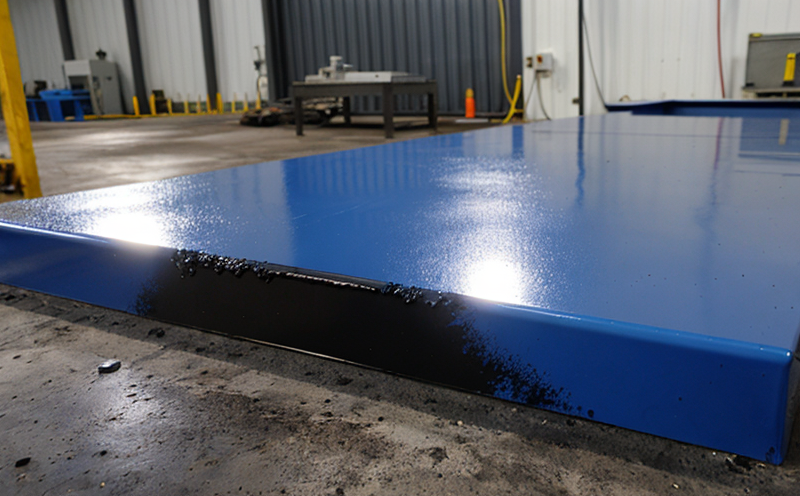ISO 4524 Porosity Testing of Gold Coatings
The ISO 4524 standard is widely recognized as a critical tool in the evaluation of gold coatings, ensuring their integrity and reliability. This test method assesses porosity within gold coatings using immersion testing combined with visual inspection to identify any defects that might compromise the performance of the coating.
Porosity in gold coatings can lead to reduced corrosion resistance, mechanical properties, and overall durability. By adhering to ISO 4524, manufacturers and quality control teams ensure they meet stringent industry standards and provide reliable products.
The process begins with thorough sample preparation, which involves cleaning the specimen to remove any contaminants that could interfere with the test results. Specimens must be dried completely before testing as moisture can lead to false positives. Once prepared, samples are immersed in a neutral salt solution (NSS) for a specified duration, after which they undergo visual inspection and air pressure testing.
For accurate results, it is essential that all equipment used adheres to the standards set forth by ISO 4524. This includes immersion tanks made of appropriate materials to prevent contamination and ensure consistent temperature control. The neutral salt solution (NSS) should also be prepared according to the specified formula to avoid any discrepancies in test outcomes.
The testing procedure itself requires meticulous attention to detail, including precise measurement of immersion time, temperature control, and adherence to the prescribed criteria for porosity determination. After the test period, samples are visually inspected under controlled lighting conditions to detect any signs of porosity or defects.
Air pressure testing follows visual inspection as a secondary method of identifying porosity. This involves applying air pressure to the specimen while submerged in water, with leaks indicating areas of porosity. The results from both methods are cross-referenced for comprehensive analysis and reporting.
The ISO 4524 standard provides clear acceptance criteria that define acceptable levels of porosity within gold coatings based on industry standards. Compliance with these criteria ensures that products meet the necessary quality benchmarks set by regulatory bodies and customer expectations.
Understanding the importance of ISO 4524 in ensuring product integrity is crucial for organizations involved in metallurgy and material testing, particularly those focusing on surface coatings, plating, and treatments. By adopting this standard, companies can enhance their reputation for delivering high-quality products while maintaining compliance with international regulations.
Industry Applications
| Industry Sector | Potential Application |
|---|---|
| Aerospace | Evaluating the integrity of gold-plated components in space environments. |
| Military | Assuring the reliability of gold-coated electronics for defense systems. |
| Battery Manufacturing | Testing gold coatings on battery terminals to enhance conductivity and durability. |
| Jewelry Production | Verifying the quality and integrity of gold plating in jewelry items. |
| Circuit Board Assembly | Evaluating the reliability of gold-plated circuits for enhanced performance. |
| Electronics Manufacturing | Ensuring the durability of gold-coated connectors and contacts. |
The ISO 4524 standard plays a pivotal role across various industries, particularly in sectors where the integrity and reliability of gold coatings are paramount. Its application extends beyond manufacturing to include quality control and research & development processes. By adhering to this standard, companies can ensure their products meet the highest quality benchmarks, thereby enhancing their reputation and market competitiveness.
Quality and Reliability Assurance
- Thorough sample preparation is critical for accurate testing results.
- Adherence to specified immersion times and temperatures ensures consistent test outcomes.
- Precision in equipment calibration guarantees reliable measurement of porosity levels.
- Cross-referencing visual inspection with air pressure testing provides comprehensive analysis.
Visual Inspection:
- Requires controlled lighting conditions for accurate evaluation.
- Involves detailed examination for any signs of defects or porosity.
Air Pressure Testing:
- Provides a secondary method to detect areas of porosity.
- Uses air pressure application while submerged in water to identify leaks.
The combination of these methods ensures that any potential issues with the gold coatings are identified early, allowing for corrective actions and process improvements. This approach not only enhances product reliability but also contributes to long-term customer satisfaction by delivering consistent quality.
Competitive Advantage and Market Impact
- Compliance with ISO 4524 ensures that products meet the highest industry standards, enhancing brand reputation.
- Porous gold coatings are less reliable, leading to potential failures in critical applications. Ensuring integrity through this testing method reduces the risk of such failures.
- The ability to consistently produce high-quality gold coatings gives companies a competitive edge over those who do not adhere to these stringent standards.
Enhanced Durability:
- Products that pass ISO 4524 testing are more durable and can withstand harsh environmental conditions.
- This longevity translates into increased product life span, reducing maintenance costs for end-users.
Better Conductivity:
- Gold coatings with low porosity offer superior electrical conductivity, improving performance in electronic applications.
- Better conductivity leads to enhanced efficiency and reliability of devices using these gold-coated components.
By investing in ISO 4524 compliance, companies not only meet regulatory requirements but also position themselves as leaders in their respective markets. This can lead to increased market share, better customer relationships, and higher profitability through satisfied customers who trust the quality of the products.





